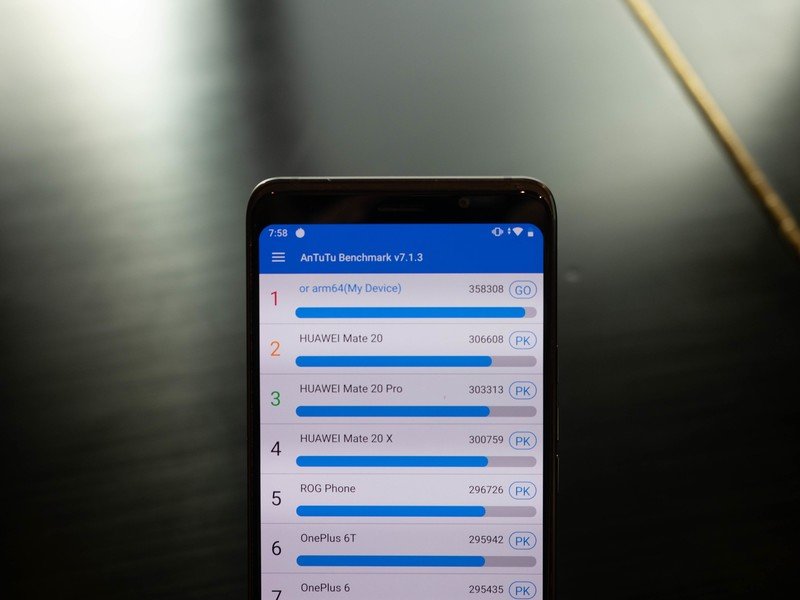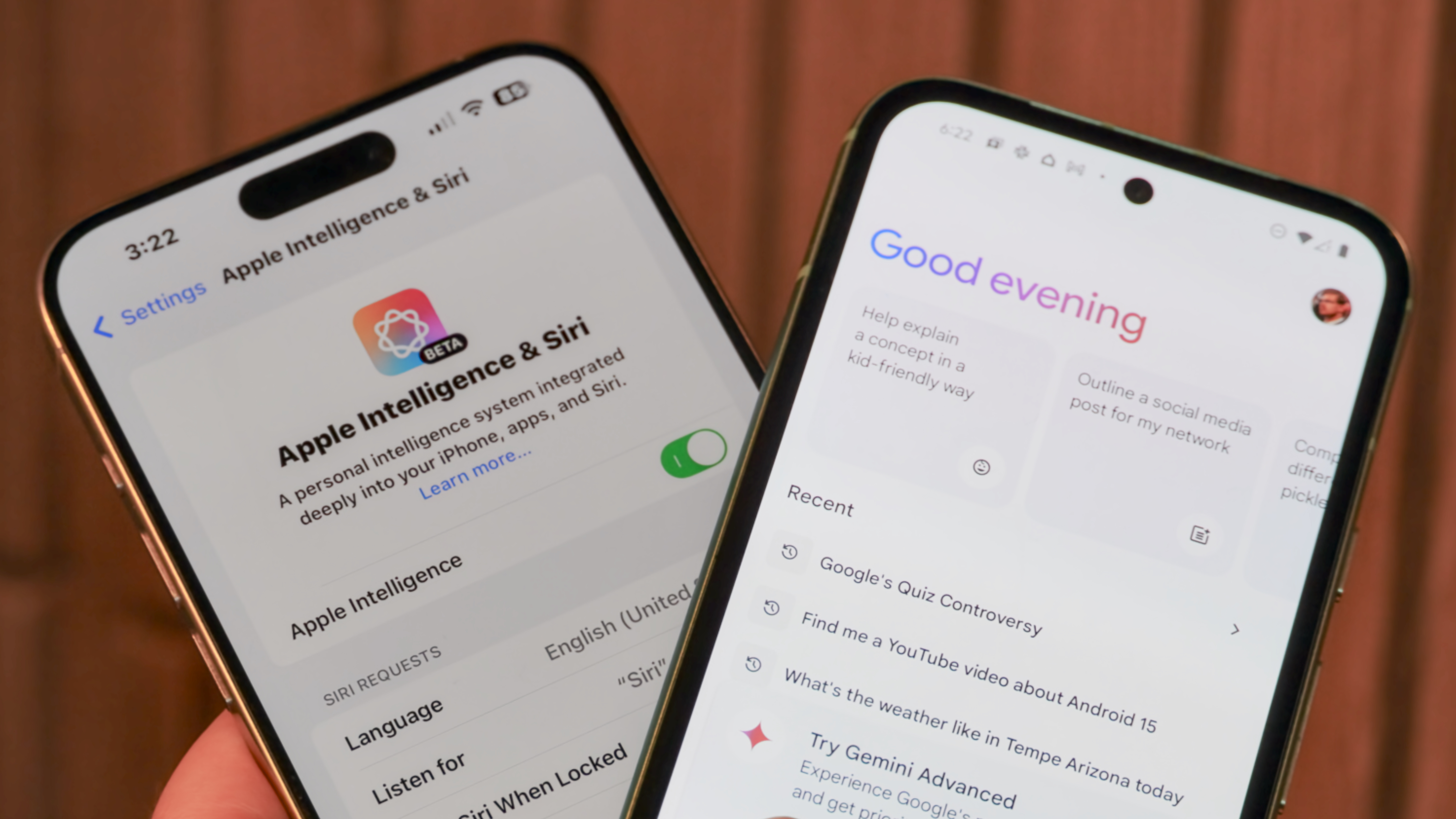The Snapdragon 855 is a benchmarking beast in a year that needs the power

Last year, we told you that while the Snapdragon 845 was an incredibly powerful chip that pushed Qualcomm forward in a number of ways, its benchmark numbers didn't really matter. At least they didn't back in February, before the first devices running the new flagship processor were on the market.
See, every year, prior to releasing its biggest-and-best platforms into the wild, Qualcomm builds a bunch of bulky, nondescript Android devices that manufacturers and, eventually, press can handle for a couple of hours in order to ascertain the inevitable numbers bump for that particular year. On their own, the numbers are pretty meaningless — what does a score of 360229 in AnTuTu 7.1.1 mean in isolation, anyway — but looked at in retrospect they tell a pretty interesting story.
Because now we have the benefit of hindsight, and I'm able to look back at those reference devices and see how production products, like the Pixel 3 I used alongside the Snapdragon 855 RD, compared to Qualcomm's own Snapdragon 845 equivalent. And the results are quite interesting, mainly because, while the Pixel 3 is a little slower in almost every test, it's within the margin of error (around 5%).
But the Pixel 3 is a fully-formed product, with working radios and a compact design and software that's been highly optimized. And it's slower than a reference device Qualcomm cobbled together with spare parts and a prayer? What does that say about the numbers I'm about to show you in relation to products like the Galaxy S10 or Pixel 4 or whatever else is released running the Snapdragon 855 in 2019? I'm not really sure, other than to reinforce that you should take these numbers with a hefty grain of salt and not read too much into them.
With that being said, let's talk numbers. First, a couple things:
- All tests were done three times and the result was the average of those three tests.
- Despite being offered the chance, we didn't perform any A.I.-specific tests on the Snapdragon 855 reference device, as Qualcomm says most have not been optimized for its Hexagon DSP and may not reflect the significant advancements in this year's processing abilities over the S845.
- These tests were done over a 90-minute timeframe on Sunday, January 6, 2019.
- Happy new year!
| Benchmark | Qualcomm Snapdragon 855 RD | Google Pixel 3 | % difference |
|---|---|---|---|
| AnTuTu 7.1.1 | Row 0 - Cell 1 | Row 0 - Cell 2 | Row 0 - Cell 3 |
| Overall | 359346 | 236344 | 52% |
| CPU | 118458 | 68103 | 74% |
| GPU | 156903 | 109528 | 43% |
| UX | 73467 | 47451 | 55% |
| Memory | 10519 | 11372 | -7.5% |
| Geekbench | Row 6 - Cell 1 | Row 6 - Cell 2 | Row 6 - Cell 3 |
| Single core | 3501 | 2348 | 49% |
| Multicore | 11189 | 7896 | 42% |
| GFXBench 4.0 | Row 9 - Cell 1 | Row 9 - Cell 2 | Row 9 - Cell 3 |
| ES 3.1 Manhattan 1080 offscreen | 71 | 44 | 61% |
| *ES 3.0 Manhattan 1080 offscreen | 102 | 63 | 62% |
| *ES 2.0 T-Rex 1080 offscreen | 61 | 61 | 0% |
| *ES 3.1 Car Chase 1080 offscreen | 42 | 35 | 20% |
| Jetstream 1.1 | 115.53 | 69.413 | 54% |
| Speedometer | 118 | 37 | 216% |

Just glancing at the numbers, it's clear that the Snapdragon 855 PD performs traditional CPU, GPU and Javascript benchmarks very well — between 20% and 75% better, on average. Some, like the Javascript-heavy Speedometer browser test, are huge jumps from the 2018 flagship; others, like the CPU-bound Geekbench and AnTuTu, are a more reasonable 50%.
Except that a 50% year-over-year jump is massive in this space. Part of the increase comes from Qualcomm's new Prime Core Kryo 485 layout, which offers a single high-performance core additional clock speed when needed, along with double the L2 cache, compared to the Kryo 385 in the Snapdragon 845. The new cores are also based on ARM's Cortex-A76 architecture, a bump over the A75 on which the 385 was based. Then there's faster LPDDR4 memory and a host of other minor improvements that lead to a generational performance leap we haven't seen since before the Snapdragon 800.
Get the latest news from Android Central, your trusted companion in the world of Android
This is the biggest year over year leap we've seen since the Snapdragon 800, and that's just counting CPU and GPU performance.
On the Adreno 640 GPU side, Qualcomm only claims a 20% performance boost over last year's 630, but these benchmarks show more variation than that. Still, it's extremely fast and few games will likely give it any trouble.
What's also not being shown here is power conservation: Qualcomm claims that despite these huge gains, the Snapdragon 855 is considerably more efficient than its predecessor, largely thanks to its new, more efficient 7nm manufacturing process.
Then there's the stuff that traditional benchmarks don't cover. Qualcomm spent a lot of time — most of the time during our briefing, in fact — emphasizing that the above benchmarks offer a tiny proportion of the total potential of this chip, which is optimized for AI and machine learning tasks that most Android developers have yet to incorporate into their applications. Those tasks, according to the company, should be performed at speeds three or four times faster on the Snapdragon 855 than the 845.

All of these advancements come at a time when Qualcomm's competition is firing on all proverbial cylinders. In late 2018, Huawei announced its Kirin 980 SoC with many of the same claims as we see above, just a few months earlier. And while the Snapdragon 855 should trounce the Kirin 980 in most synthetic benchmarks, Huawei seems to be a generation ahead by many metrics, and is being held at bay primarily by Qualcomm's outsized U.S. market share.
Finally, there's Apple's A12 Bionic, which was announced alongside the iPhone XS in September. I did a few cursory benchmarks to see, given the Snapdragon 855's considerable advancements in 2019, whether Apple's internally-designed SoC was still the industry winner. And, well, see for yourself.
| Benchmark | Qualcomm Snapdragon 855 RD | iPhone XS | % difference |
|---|---|---|---|
| AnTuTu 7.1.1 | Row 0 - Cell 1 | Row 0 - Cell 2 | Row 0 - Cell 3 |
| Overall | 359346 | 335495 | 7% |
| CPU | 118458 | 127126 | -6.82% |
| GPU | 156903 | 131153 | 20% |
| UX | 73467 | 64806 | 13% |
| Memory | 10519 | 64806 | -15% |
| Geekbench | Row 6 - Cell 1 | Row 6 - Cell 2 | Row 6 - Cell 3 |
| Single core | 3501 | 4811 | -27% |
| Multicore | 11189 | 11483 | -2.56% |
| Jetstream 1.1 | 115.53 | 269.7 | -57.16% |
| Speedometer | 118 | 242 | -51.43% |
I was expecting worse — a lot worse. Apple's had a pretty sizeable lead in almost every metric over the flagship Snapdragon 8xx SoC over the past few years, and while you can certainly say that's still true, this is the closest they've ever been. Apple still owns Qualcomm on Javascript optimization — heck, it beats Intel — and its GPU is still considerably faster, but the overall picture looks pretty good for Qualcomm right now, and that's a feat unto itself.
I'll leave it there for now. There's no point getting too hung up on these numbers until the Galaxy S10 is released in March and we had a shipping phone with a commercial version of the Snapdragon 855 running retail Android software. But I'm also really hopeful that, alongside the proliferation of 5G and the maturation of AI-based applications, this'll be a year to remember for performance in general in the Android space.

Daniel Bader was a former Android Central Editor-in-Chief and Executive Editor for iMore and Windows Central.
